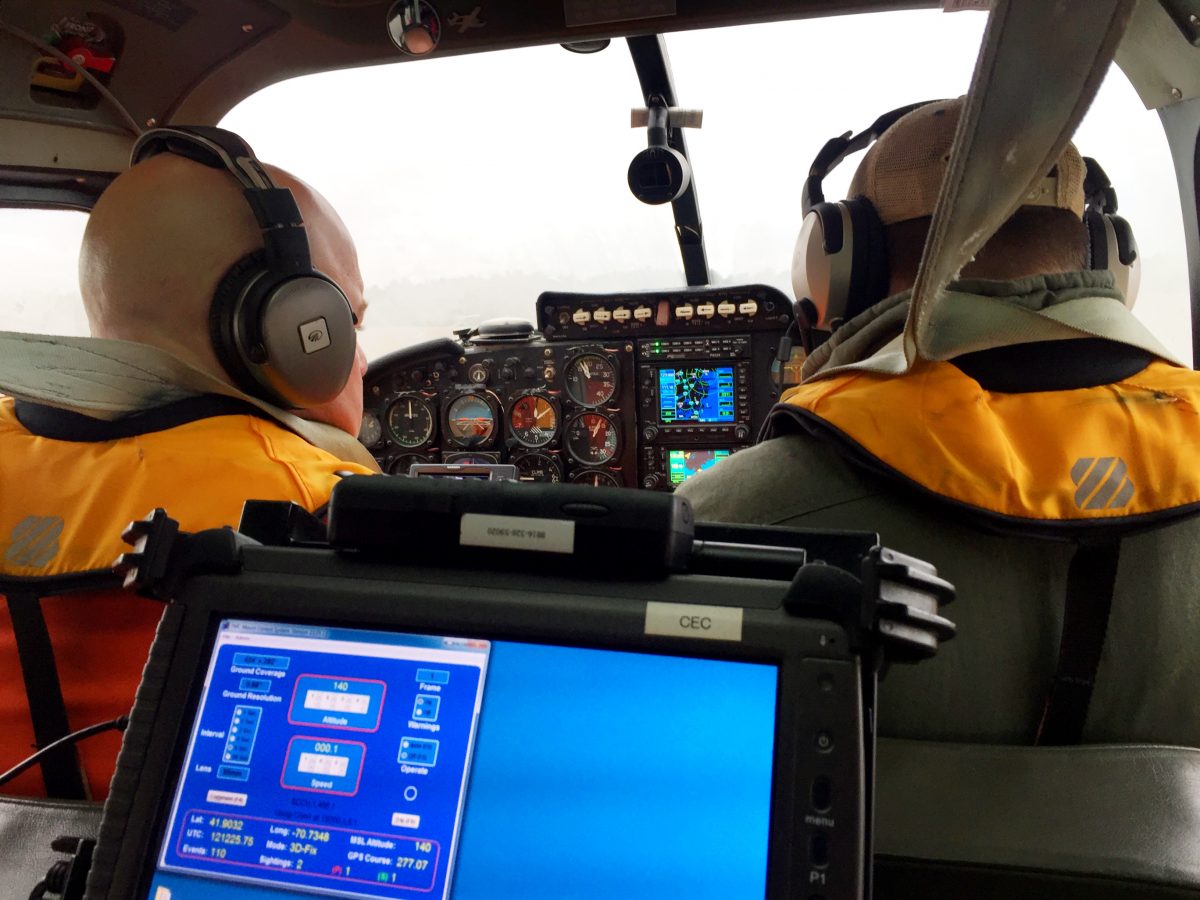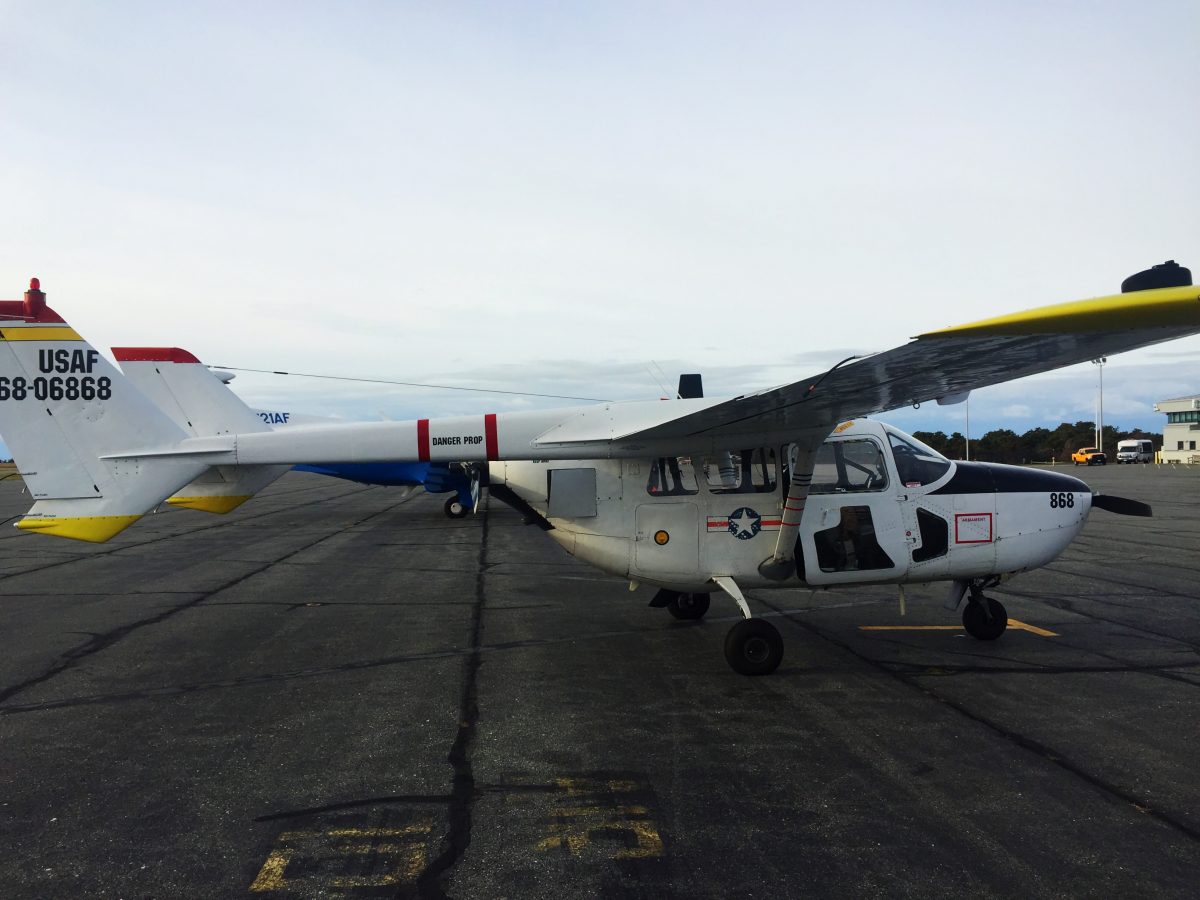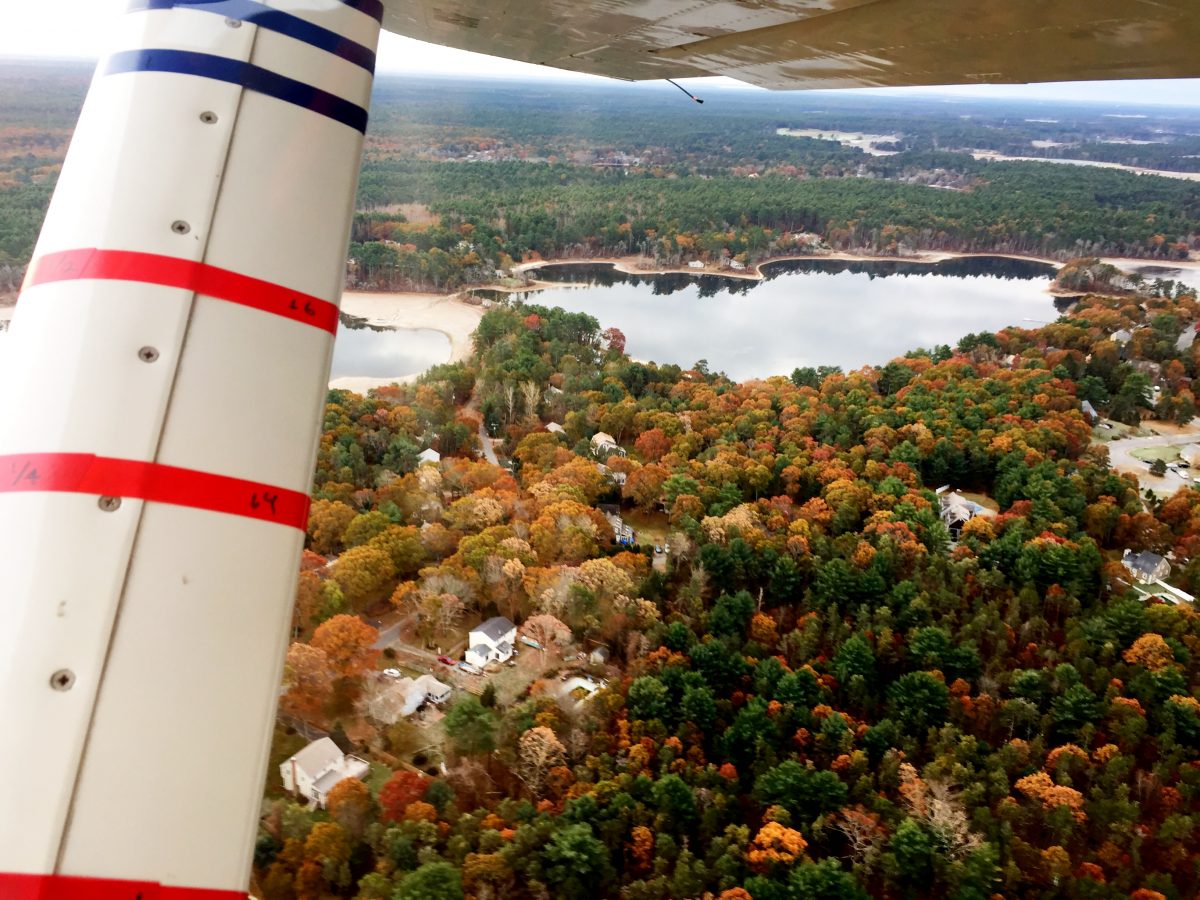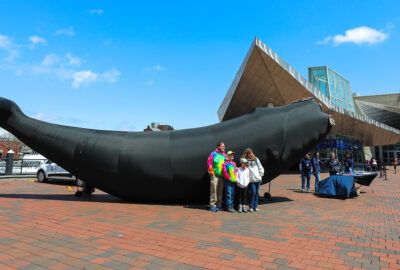Aerial Team Conducts Northeast Canyons Marine National Monument Survey
The successful survey documented multiple sightings of ocean sunfish, sharks, dolphins and whales.
By New England Aquarium on Thursday, November 16, 2017

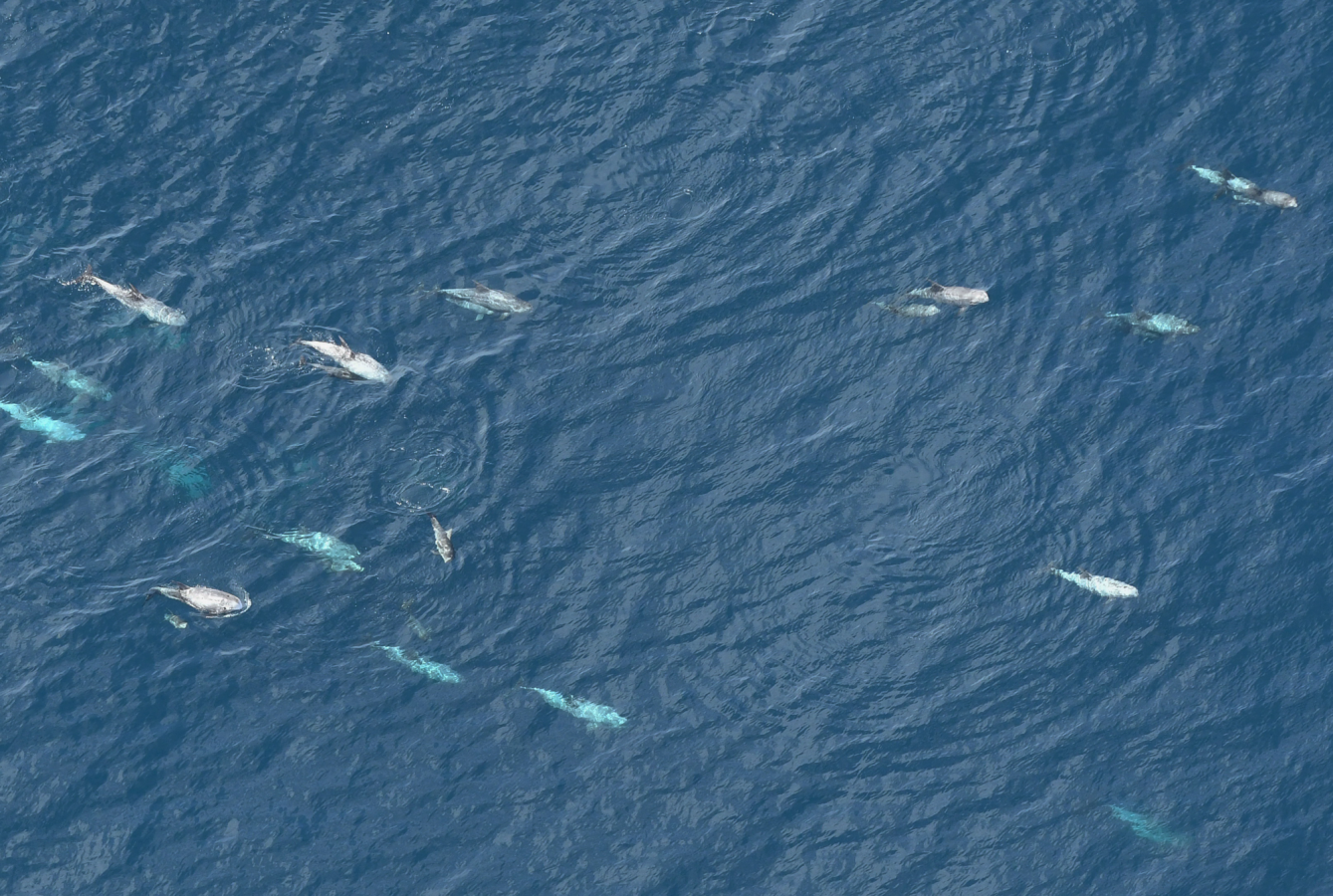
The Anderson Cabot Center for Ocean Life at the New England Aquarium aerial team conducted a survey in the Northeast Canyons Marine National Monument on November 12, 2017. The objective of the survey was to document all marine fauna visible at the surface and any human activity in this marine protected area.
The Northeast Canyons is part of the Northeast Canyons and Seamounts Marine National Monument—the first Blue Park in the U.S. North Atlantic. It was created in September 2016 and is located about 150 miles off the coast of Cape Cod.
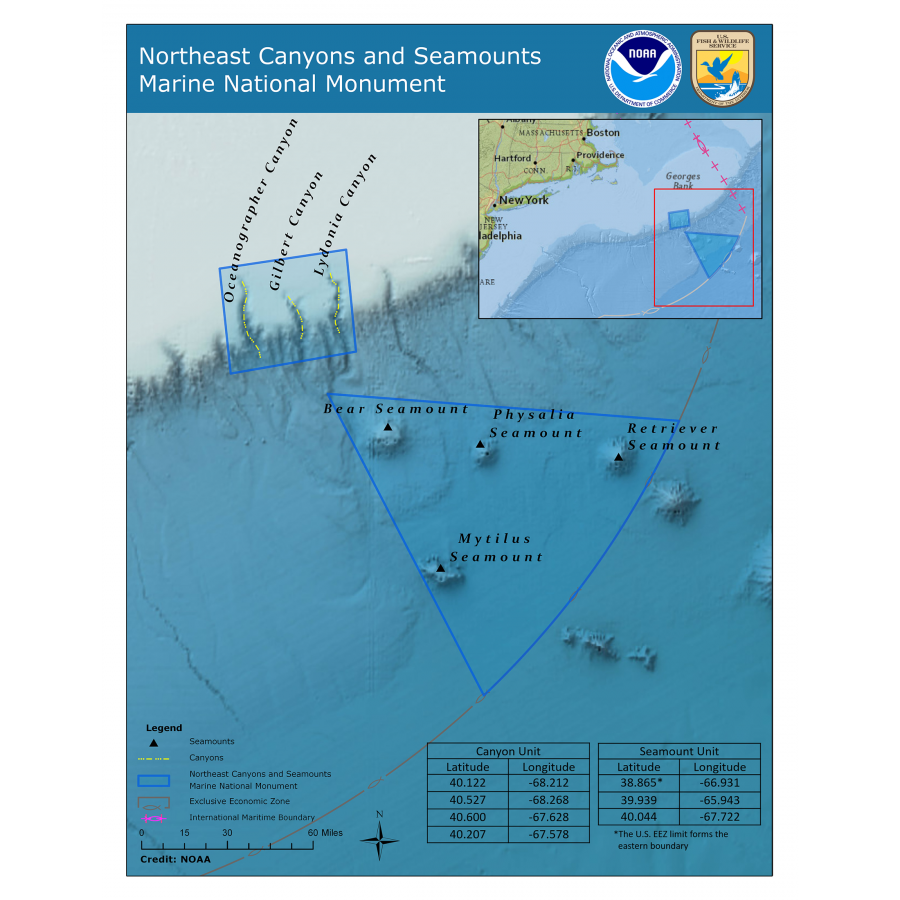
Roughly the size of Connecticut, the monument features three underwater canyons deeper than the Grand Canyon and four seamounts (extinct volcanoes) that rival the Rocky Mountains in their size and majesty.
An aerial survey at the marine monument is an all-day endeavor. The team left Boston around 5:30 a.m. and drove to Plymouth, where the survey plane (a Cessna Skymaster) was located. The plane took off around 7:00 a.m. and headed to Nantucket to top off the fuel tanks. Given that the monument is 100 miles offshore, we like to have fuel reserves for the approximate seven-hour survey.
/
We took off from the Nantucket Municipal Airport at 8:18 a.m. It takes about an hour to reach the monument, so we started our survey work around 9 a.m. We fly at an altitude of 1,000 feet (305 m) and a groundspeed of 100 knots (185 km/h), and we use all the latest advances in safety, including a ground contact who tracks our progress throughout the flight. We had good conditions all day, including good visibility greater than 5 nautical miles, low wave heights, and calm winds.
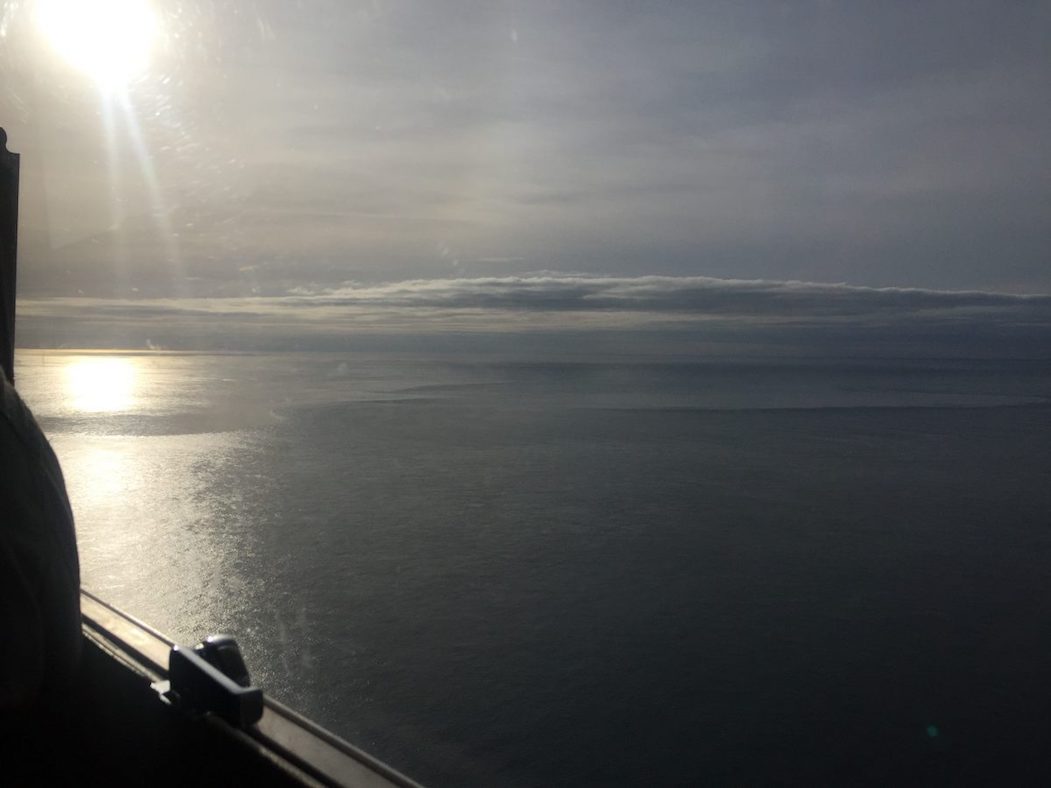
We made 27 observations of marine life during the approximate four-hour survey, an extraordinary number for such a small area. This included sightings of bottlenose dolphins (25), common dolphins (58), Risso’s dolphins (37), Cuvier’s beaked whales (11), finback whales (4), and one sperm whale. Several animals were observed feeding and—except for fin whales and the sperm whale—all other groups contained calves or juveniles (based on body size and coloration).
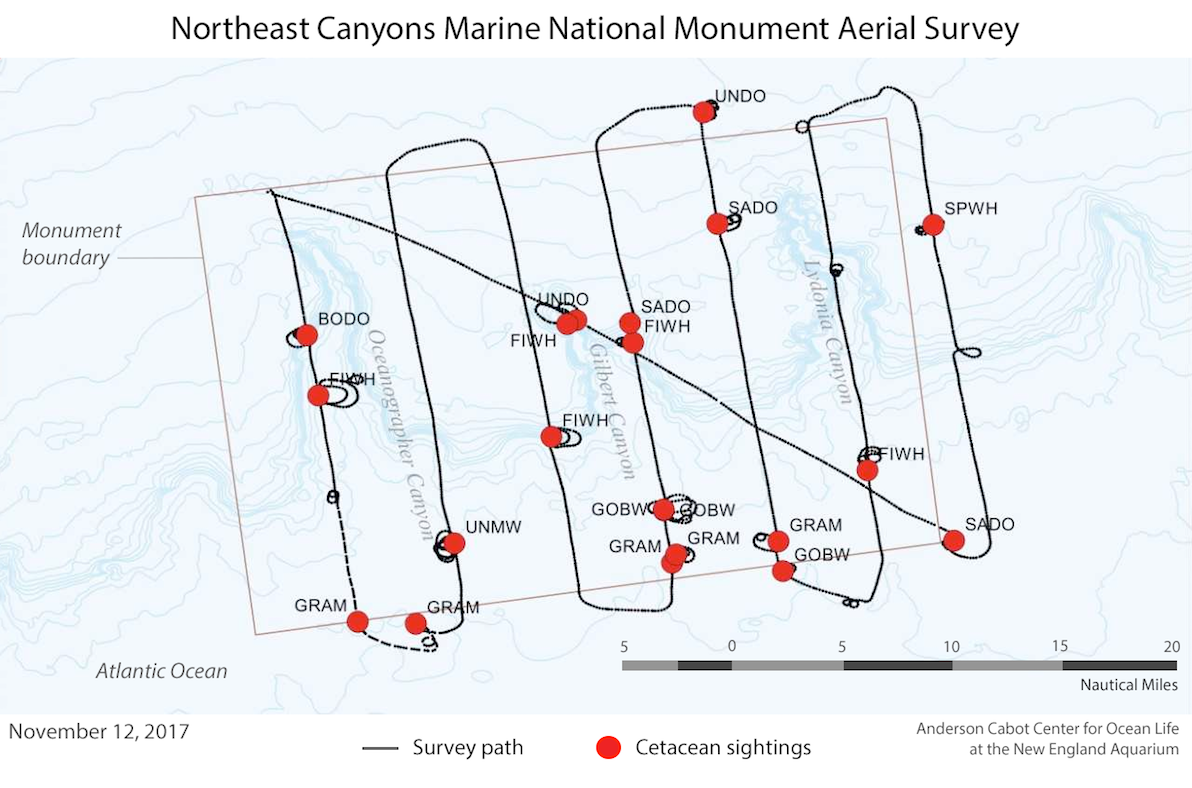
This is an extraordinary collection of species, because it shows that animals in this area are feeding at many different trophic levels. For example, fin whales feed largely on schooling fish and krill, whereas sperm whales and beaked whales feed on squid in the very deep waters of the canyons.

Beaked whales also feed primarily on squid, and less frequently on fish in deep waters. Risso’s dolphins consume octopus, cuttlefish, squid, and krill. Bottlenose dolphins and common dolphins have a more diverse diet that is dominated by fish. All combined, the sightings within this small area showed an extraordinary abundance and diversity of cetaceans, all likely feeding on the full range of whale and dolphin prey.
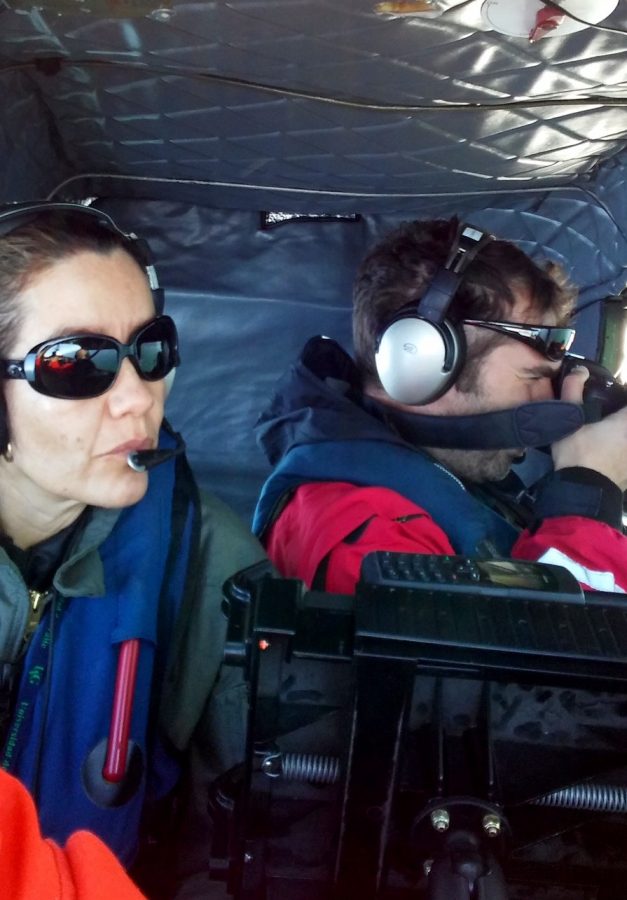
We also saw ocean sunfish, sharks, fishing gear, debris, and cargo and fishing boats (5). The majority of the fishing gear and vessels were located near the boundaries of the monument. We finished our survey around 1 p.m., and the team back was back in Plymouth at 2:20 p.m.
It is exciting to realize that during a single day in the monument we saw so much. The survey results highlight the importance of this protected area as a hot spot for marine mammals. Like our last survey out here, we continued to see a very high percentage of young dolphins and whales with their moms, enough to make us wonder if it qualifies as nursery for the shelf edge cetaceans.
These survey results provide further evidence that the protection provided by monument designation will continue to improve ocean resilience in the face of climate change, and will help to sustain the ocean ecosystems in the region.

